In the competitive landscape of small hatchbacks, the Hyundai i10 and VW Polo stand out as two strong contenders. While both cars cater to urban dwellers who appreciate compactness without compromising on functionality, they each bring distinct characteristics and technological innovations to the table. This article dives into a comprehensive comparison to help potential buyers make an informed decision.
Hyundai i10 vs VW Polo – Which model is better for everyday use?
Everyday use, family trips or long-distance drives – here’s where the differences show.
Discover whether Hyundai i10 or VW Polo fits your lifestyle better.
Design and Dimensions
Starting with the dimensions, the Hyundai i10 measures 3,670 mm in length and 1,680 mm in width, while the VW Polo is larger at 4,074 mm long and 1,751 mm wide. The increased size of the Polo naturally translates to a more spacious interior and a trunk capacity of 351 liters, compared to the i10's 252 liters. Despite its smaller size, the i10's compact nature makes it easy to navigate through narrow streets and tight parking spots, a significant advantage in urban environments.
Powertrain Options
Under the hood, the engine configurations diverge significantly. The Hyundai i10 offers a range of petrol engines, with power outputs ranging from 63 HP to 90 HP and engine capacities of up to 1.2 liters. The i10 also prides itself on its fuel efficiency, with consumption ratings between 4.9 to 5.4 L/100km. On the flip side, the VW Polo boasts a broader range of engines, offering outputs from 80 HP up to a powerful 207 HP with a larger 2.0-liter engine option in its GTI variant. This diversity allows for a tailored driving experience depending on the buyer’s performance preferences.
Transmission and Performance
Both models come equipped with manual and automatic transmission options. The i10 features a standard manual gearbox and an automated manual, while the Polo implements a more sophisticated dual-clutch automatic system, providing a smoother and quicker shift experience. In terms of acceleration, the i10 can reach 100 km/h in as little as 11.4 seconds, while the swiftest Polo can do so in a rapid 6.5 seconds, appealing to those who prioritize performance.
Fuel Efficiency and CO2 Emissions
When it comes to fuel consumption, the i10 excels with a lower average of 5.2 L/100km across its variants, whereas the Polo varies from 5.2 to 6.5 L/100km depending on the engine option selected. Emission ratings also vary, with the i10 achieving a CO2 output ranging from 111 to 122 g/km, while the Polo's emissions are higher, peaking at 149 g/km for its sportiest model. Buyers mindful of environmental impact may prefer the i10 for its better efficiency.
Interior and Innovations
The interior of both cars features modern amenities, but the Polo typically boasts a more premium feel with higher quality materials and advanced infotainment systems. The latest Polo incorporates a fully digital cockpit and innovative connectivity options, including integration with smartphone apps. Meanwhile, the i10 offers a user-friendly infotainment system with essential features and solid build quality that make it a practical choice.
Safety Features
Safety is a paramount concern for compact car buyers, and both models come with a host of features. The Polo, with its advanced driver-assistance systems, provides higher marks in crash safety ratings. Meanwhile, the i10 also includes essential safety features, such as airbags and stability control, making it a reliable option for city driving.
Conclusion
In conclusion, the choice between the Hyundai i10 and VW Polo ultimately comes down to personal preference and priorities. The i10 shines with its compact size, fuel efficiency, and affordability, making it a superb choice for city dwellers. On the other hand, the VW Polo's performance, space, and premium features make it suitable for individuals seeking a sportier drive. Regardless of your choice, both vehicles stand as strong candidates in the competitive hatchback segment, appealing to a wide variety of drivers.
Here’s where it gets real: The technical differences in detail
Costs and Efficiency:
Price and efficiency are key factors when choosing a car – and this is often where the real differences emerge.
Hyundai i10 has a to a small extent advantage in terms of price – it starts at 14600 £, while the VW Polo costs 17000 £. That’s a price difference of around 2439 £.
Fuel consumption also shows a difference: Hyundai i10 manages with 4.90 L and is therefore barely noticeable more efficient than the VW Polo with 5.10 L. The difference is about 0.20 L per 100 km.
Engine and Performance:
Power, torque and acceleration say a lot about how a car feels on the road. This is where you see which model delivers more driving dynamics.
When it comes to engine power, the VW Polo has a significantly edge – offering 207 HP compared to 90 HP. That’s roughly 117 HP more horsepower.
In acceleration from 0 to 100 km/h, the VW Polo is clearly quicker – completing the sprint in 6.50 s, while the Hyundai i10 takes 11.40 s. That’s about 4.90 s faster.
In terms of top speed, the VW Polo performs noticeable better – reaching 240 km/h, while the Hyundai i10 tops out at 175 km/h. The difference is around 65 km/h.
There’s also a difference in torque: VW Polo pulls decisively stronger with 320 Nm compared to 172 Nm. That’s about 148 Nm difference.
Space and Everyday Use:
Whether family car or daily driver – which one offers more room, flexibility and comfort?
Both vehicles offer seating for 5 people.
In curb weight, Hyundai i10 is a bit lighter – 996 kg compared to 1143 kg. The difference is around 147 kg.
In terms of boot space, the VW Polo offers clearly perceptible more room – 351 L compared to 252 L. That’s a difference of about 99 L.
In maximum load capacity, the VW Polo performs barely noticeable better – up to 1125 L, which is about 75 L more than the Hyundai i10.
When it comes to payload, VW Polo hardly perceptible takes the win – 457 kg compared to 423 kg. That’s a difference of about 34 kg.
Who wins the race?
The VW Polo proves to be dominates this comparison and therefore becomes our DriveDuel Champion!
VW Polo is the better all-rounder in this comparison.
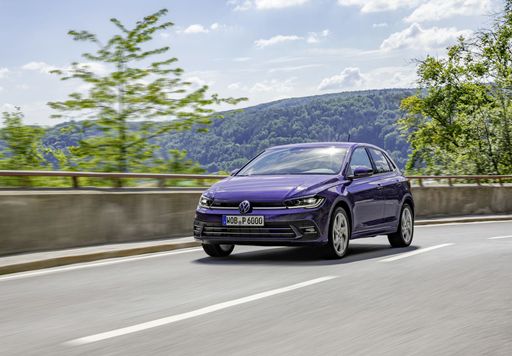 @ Volkswagen AG / VW Media
@ Volkswagen AG / VW Media
VW Polo
Hyundai i10
The Hyundai i10 is a cheeky city car that squeezes big-car confidence into a pocket-friendly package, carving through tight streets with surprising composure and sensible practicality. For buyers after low fuss, sensible equipment and wallet-friendly running costs, it's a smart, no-nonsense pick that makes sense whether you're a first-time driver or need a reliable second car.
details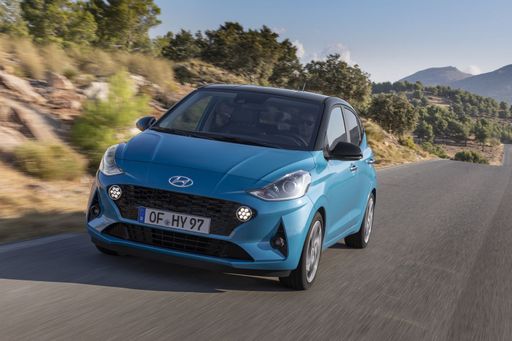 @ Hyundai Motor Company
@ Hyundai Motor Company
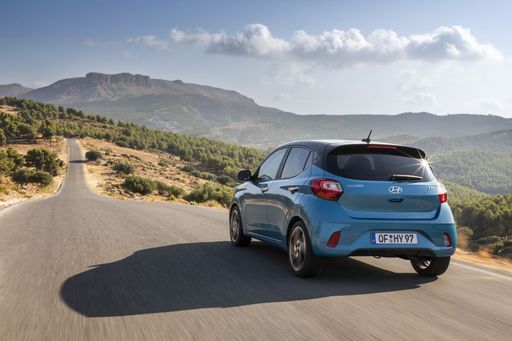 @ Hyundai Motor Company
@ Hyundai Motor Company
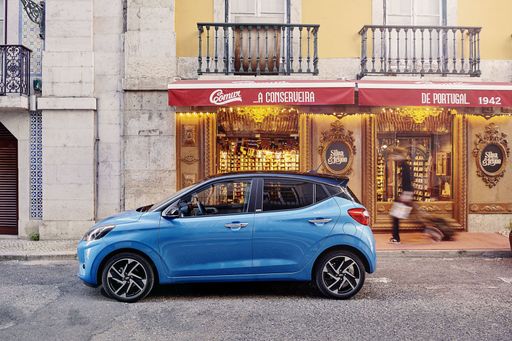 @ Hyundai Motor Company
@ Hyundai Motor Company
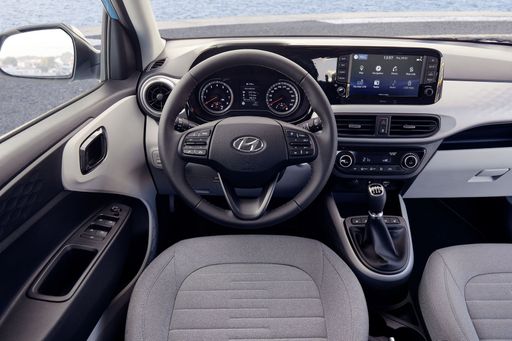 @ Hyundai Motor Company
@ Hyundai Motor Company
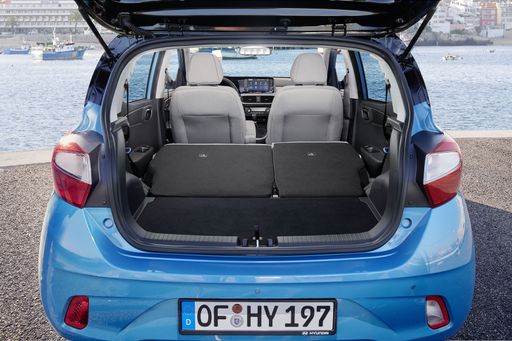 @ Hyundai Motor Company
@ Hyundai Motor Company
VW Polo
The Polo is a small car with surprisingly grown-up refinement, delivering comfortable packaging, crisp handling and a build quality that punches above its class. For buyers who want a practical, fuss-free hatch that still feels a little premium, it’s a sensible, slightly cheeky choice you’ll enjoy every day.
details @ Volkswagen AG / VW Media
@ Volkswagen AG / VW Media
 @ Volkswagen AG / VW Media
@ Volkswagen AG / VW Media
 @ Volkswagen AG / VW Media
@ Volkswagen AG / VW Media
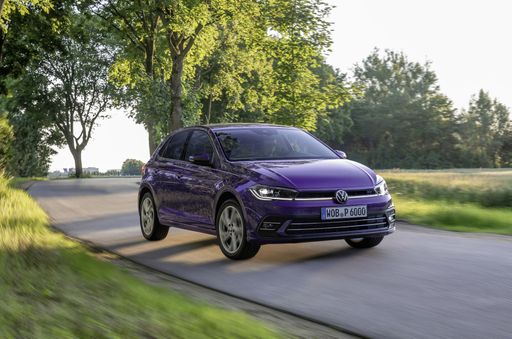 @ Volkswagen AG / VW Media
@ Volkswagen AG / VW Media
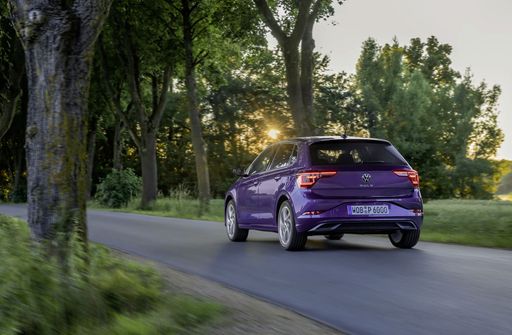 @ Volkswagen AG / VW Media
@ Volkswagen AG / VW Media
 @ Volkswagen AG / VW Media
@ Volkswagen AG / VW Media
 @ Hyundai Motor Company
@ Hyundai Motor Company
|
 @ Volkswagen AG / VW Media
@ Volkswagen AG / VW Media
|
|
|
|
Costs and Consumption |
|
|---|---|
|
Price
14600 - 19000 £
|
Price
17000 - 30400 £
|
|
Consumption L/100km
4.9 - 5.5 L
|
Consumption L/100km
5.1 - 6.5 L
|
|
Consumption kWh/100km
-
|
Consumption kWh/100km
-
|
|
Electric Range
-
|
Electric Range
-
|
|
Battery Capacity
-
|
Battery Capacity
-
|
|
co2
110 - 124 g/km
|
co2
116 - 148 g/km
|
|
Fuel tank capacity
36 L
|
Fuel tank capacity
40 L
|
Dimensions and Body |
|
|---|---|
|
Body Type
Hatchback
|
Body Type
Hatchback
|
|
Seats
4 - 5
|
Seats
5
|
|
Doors
5
|
Doors
5
|
|
Curb weight
996 - 1099 kg
|
Curb weight
1143 - 1378 kg
|
|
Trunk capacity
252 L
|
Trunk capacity
351 L
|
|
Length
3670 - 3675 mm
|
Length
4074 mm
|
|
Width
1680 mm
|
Width
1751 mm
|
|
Height
1480 - 1483 mm
|
Height
1431 - 1451 mm
|
|
Max trunk capacity
1050 L
|
Max trunk capacity
1125 L
|
|
Payload
344 - 423 kg
|
Payload
432 - 457 kg
|
Engine and Performance |
|
|---|---|
|
Engine Type
Petrol
|
Engine Type
Petrol
|
|
Transmission
Manuel, Automatic
|
Transmission
Manuel, Automatic
|
|
Transmission Detail
Manual Gearbox, Automated Manual
|
Transmission Detail
Manual Gearbox, Dual-Clutch Automatic
|
|
Drive Type
Front-Wheel Drive
|
Drive Type
Front-Wheel Drive
|
|
Power HP
63 - 90 HP
|
Power HP
80 - 207 HP
|
|
Acceleration 0-100km/h
11.4 - 18.4 s
|
Acceleration 0-100km/h
6.5 - 15.6 s
|
|
Max Speed
143 - 175 km/h
|
Max Speed
171 - 240 km/h
|
|
Torque
93 - 172 Nm
|
Torque
93 - 320 Nm
|
|
Number of Cylinders
3 - 4
|
Number of Cylinders
3 - 4
|
|
Power kW
46 - 66 kW
|
Power kW
59 - 152 kW
|
|
Engine capacity
998 - 1197 cm3
|
Engine capacity
999 - 1984 cm3
|
General |
|
|---|---|
|
Model Year
2024
|
Model Year
2024 - 2025
|
|
CO2 Efficiency Class
C, D
|
CO2 Efficiency Class
D, E
|
|
Brand
Hyundai
|
Brand
VW
|
Is the Hyundai i10 offered with different drivetrains?
The Hyundai i10 is offered with Front-Wheel Drive.
The prices and data displayed are estimates based on German list prices and may vary by country. This information is not legally binding.
